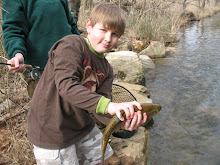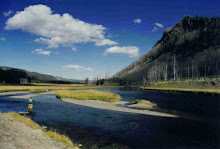
Fly tying from the very beginning was intriguing to me. How different parts of various animals could be blended together to mimic a natural trout food was almost unbelievable....in some ways it still is.
If you tie flies you know what I mean. Its how that one particular feather seems to capture the essence of what makes an insect look or seem alive- -- maybe its the texture, the color, the way it lies flat or the way it bends. Simply put, it is amazing to me that how well certain parts of a bird or beast seem to match exactly an insect body feature or part you are trying to match.
This holds true especially for certain types of materials, like duck wings. The delicate wing quills can be separated into slips that mimic perfectly the wing of a mayfly dun. Or maybe it is the way the hackle fibers can be trimmed close to a stem, the stem knotted, and the end result ends up being a dead ringer for a grasshopper leg. Or the way ostrich herl is wound and then when fished it breathes....giving so much movement in the water that it perfectly mimics the gills on a natural nymph's abdomen. Or finally, the many ways a turkey quill can be sprayed and then trimmed to mimic a caddis wing, hopper wing, even wing pads on a stonefly nymph.
In any case, that is what makes fly tying an art. Just like an artist, a tyer begins working his "canvas" with a vision in mind and begins blending, trimming, tying, adjusting, trimming some more and then finally the end product emerges. And just like most artists, a good fly tyer will tell you that his best fly is one that he has yet to tie.




























No comments:
Post a Comment